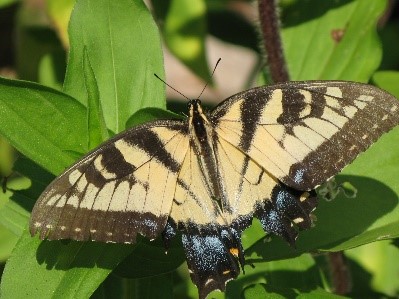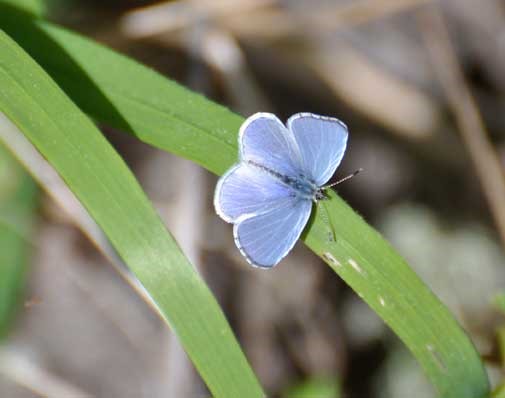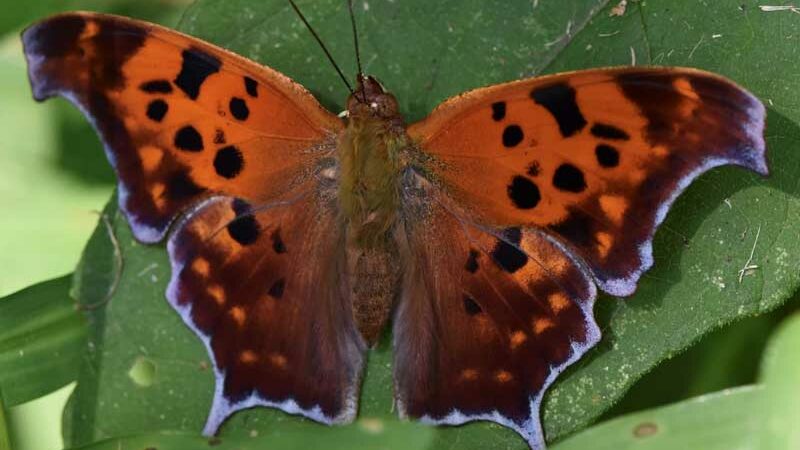Wings of Spring
Early Spring is a time when many of us are focused on spring wildflowers. But if you look up from the flowers you may see early spring butterflies. On a warm day in February an Orange Sulphur, Cabbage White, Comma, or Question Mark might be seen. By Mid-March – Falcate Orange Tip, Mourning Cloak, Spring Azure, and Eastern Tiger Swallowtails have appeared.

Here are a few facts about these early arrivals:
- Some butterflies, such as the Question Mark, Comma and Mourning Cloak hibernate.
- A butterfly produces a type of antifreeze called Glycerol and enters a state of suspended animation called *diapause to survive the winter.
- A Cabbage White, Falcate Orange Tip, Eastern Tiger Swallowtail, Orange Sulphur, and Spring Azure spends it winter as a *pupa.
- Host plants vary from species to species but often include hackberry trees, clover, and various plants in the mustard family.
- Spring Azure uses the blooming dogwood as its host plant
* Diapause is a period of suspended development in an insect, especially during unfavorable environmental conditions.
*A pupa is an insect in its inactive immature form between larva and adult, e.g. a chrysalis.

Want to see more spring butterflies?
- Plant More Trees. Mourning cloaks and eastern commas rarely feed on flowers, instead preferring the tree sap that starts to run in late winter.
- Don’t mow early spring wildflowers.
- Provide fruit and nectar feeders.
- Leave leaf litter.
When you support Friends of Warner Parks you protect and support the habitat of these early spring butterflies. Make a donation, become a member, and volunteer today! You can also check out our Nature Center Programs to learn about butterflies, wildflowers, and other environmental education opportunities.


